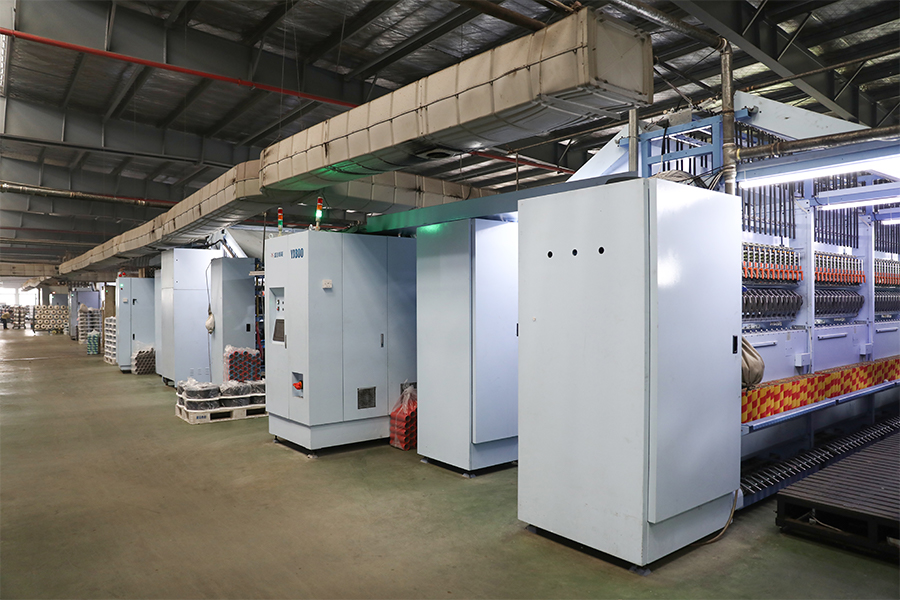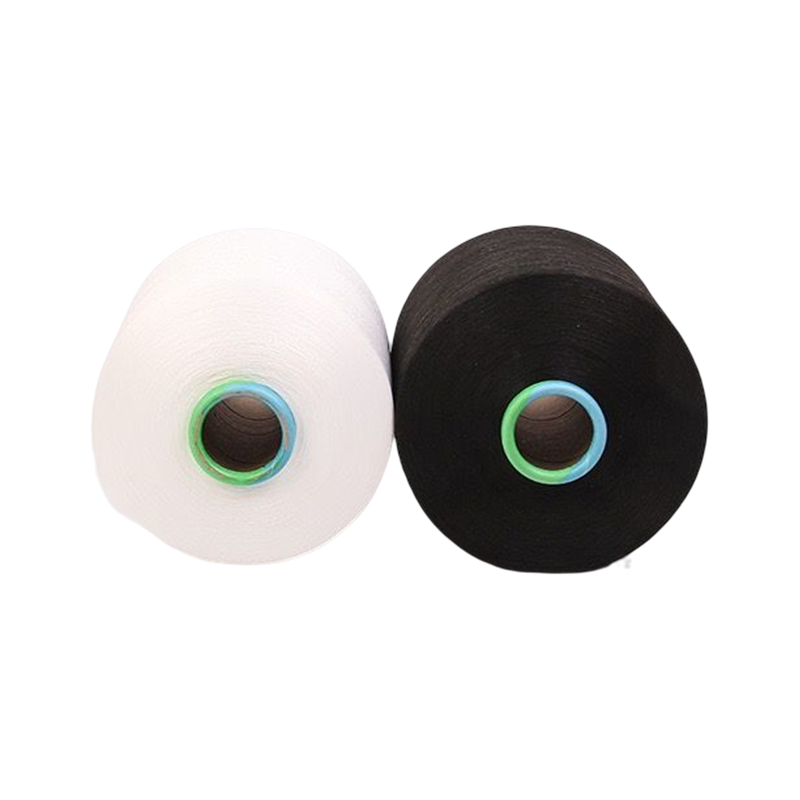- 1 1. Understanding DTY Yarn Structure and Its Impact on Fabric Properties
- 2 2. DTY Yarn Applications Across Different Fabric Types
- 3 3. Performance Comparison: DTY vs. Other Yarn Types
- 4 4. Measuring the Effectiveness of DTY Yarn in Fabric Performance
- 5 5. Optimizing DTY Yarn Selection for Specific End-Use Requirements
- 6 6. Troubleshooting Common DTY Yarn Processing Issues
- 7 FAQ
In the competitive textile industry, fabric performance is a crucial differentiator that determines market success. Among the various yarn types available, Draw Textured Yarn (DTY) has emerged as a pivotal material for enhancing fabric characteristics across multiple applications. DTY yarn undergoes a sophisticated texturing process that imparts unique properties, making it indispensable for creating high-performance textiles. This comprehensive analysis explores how DTY yarn applications significantly improve fabric performance, examining its structural advantages, processing benefits, and measurable effectiveness in finished products.
Anti-wrinkle and antibacterial polyester DTY yarn Green Series ZG0136 Grass Green 084
1. Understanding DTY Yarn Structure and Its Impact on Fabric Properties
DTY yarn is produced through a specialized process involving simultaneous drawing and texturing of partially oriented yarn (POY), creating a permanent crimp and loops along the filament length. This distinctive structure fundamentally enhances the yarn's characteristics, which subsequently translate to superior fabric performance. The texturing process transforms smooth, straight filaments into voluminous, elastic yarns with improved covering power and tactile properties.
- Enhanced Bulk and Coverage: The crimped structure creates air pockets within the yarn, increasing volume without additional weight and providing better fabric coverage with less material.
Improved Elasticity and Recovery: The permanent crimp allows the yarn to stretch and return to its original length, contributing to fabric stretch and recovery properties. - Superior Moisture Management: The textured structure creates capillary action that wicks moisture away from the body, enhancing comfort in activewear and intimate apparel.
- Reduced Transparency: The increased bulk and opacity minimize fabric sheerness, making it ideal for lightweight garments without compromising modesty.
1.1. Key advantages of DTY yarn in textile manufacturing
The manufacturing benefits of DTY yarn extend beyond final fabric properties to encompass significant processing advantages. Understanding these key advantages of DTY yarn in textile manufacturing helps explain its widespread adoption across various textile sectors and its economic viability for mass production.
- Reduced Production Costs: The higher bulk and coverage enable fabric manufacturers to achieve desired fabric weight and coverage using less raw material.
- Enhanced Processing Efficiency: DTY yarns exhibit better tension control during weaving and knitting, resulting in fewer breaks and higher machine efficiency.
- Versatile Application Range: Suitable for various fabric construction methods including circular knitting, warp knitting, and weaving across different gauge machines.
- Superior Dyeability: The textured structure allows for better dye penetration and more uniform color distribution, resulting in vibrant, consistent coloration.
2. DTY Yarn Applications Across Different Fabric Types
The versatility of DTY yarn enables its application across diverse fabric categories, each benefiting from its unique properties. From everyday apparel to technical textiles, DTY yarn enhances performance characteristics specific to each end-use. The adaptability of this yarn type makes it a preferred choice for manufacturers seeking to improve their product offerings across multiple market segments.
- Apparel Fabrics: Widely used in sportswear, casual wear, intimate apparel, and shirts for its comfort, stretch, and drape characteristics.
- Home Textiles: Employed in upholstery, curtains, and bedding for its durability, opacity, and aesthetic appeal.
- Technical Textiles: Utilized in automotive interiors, industrial fabrics, and medical textiles where specific performance attributes are required.
- Hosiery and Socks: Ideal for legwear due to its elasticity, moisture management, and comfort against skin.
3. Performance Comparison: DTY vs. Other Yarn Types
To fully appreciate the value proposition of DTY yarn, it's essential to compare its performance against alternative yarn types commonly used in textile manufacturing. This comparative analysis highlights the specific scenarios where DTY yarn delivers superior results and helps manufacturers make informed material selection decisions based on technical requirements and cost considerations.
- DTY vs. FDY (Fully Drawn Yarn): DTY offers better elasticity, bulk, and coverage compared to the smoother, stronger, but less bulky FDY.
- DTY vs. Spun Yarn: DTY provides superior strength, uniformity, and production efficiency, while spun yarn offers better absorbency and a natural feel.
- DTY vs. ATY (Air Textured Yarn): DTY typically has better elasticity and uniformity, while ATY can achieve more pronounced texture effects.
| Performance Parameter | DTY Yarn | FDY Yarn | Spun Yarn |
| Elasticity & Recovery | Excellent | Poor | Moderate |
| Strength & Durability | Very Good | Excellent | Good |
| Production Efficiency | High | High | Moderate |
| Moisture Management | Good | Fair | Excellent |
| Cost Efficiency | High | Moderate | Variable |
4. Measuring the Effectiveness of DTY Yarn in Fabric Performance
The effectiveness of DTY yarn in enhancing fabric performance can be quantified through standardized testing methods and performance indicators. These measurable parameters provide objective data to support the subjective benefits often associated with DTY-based fabrics, enabling manufacturers to make evidence-based decisions regarding material selection and product development.
- Durability Metrics: Assessed through abrasion resistance tests, tensile strength measurements, and pilling resistance evaluations.
- Comfort Indicators: Measured using air permeability testers, moisture management test equipment, and thermal resistance analyzers.
- Aesthetic Qualities: Evaluated through color fastness testing, appearance retention after washing, and drape coefficient measurements.
- Functional Performance: For technical applications, specific tests include UV resistance, antimicrobial efficacy, and flame retardancy as required.
4.1. DTY yarn quality assessment methods
Ensuring consistent DTY yarn quality is fundamental to achieving predictable fabric performance. Implementing robust DTY yarn quality assessment methods throughout the manufacturing process helps identify potential issues early and maintains product standards. These assessment techniques cover various aspects of yarn quality from physical properties to visual characteristics.
- Evenness Testing: Using Uster Evenness Testers to measure coefficient of variation (CV%) and imperfections (thick places, thin places, neps).
- Mechanical Property Analysis: Determining tenacity, elongation, and elastic recovery through tensile testing equipment.
- Crimp Properties Evaluation: Measuring crimp contraction, crimp modulus, and crimp stability to predict fabric bulk and elasticity.
- Visual Inspection: Examining yarn packages for dyeing suitability, contamination, and winding quality through manual and automated systems.
5. Optimizing DTY Yarn Selection for Specific End-Use Requirements
Selecting the appropriate DTY yarn specifications for specific applications requires careful consideration of multiple parameters. The effectiveness of DTY yarn in enhancing fabric performance is maximized when yarn characteristics are precisely matched to end-use requirements. This optimization process involves technical knowledge of how different DTY parameters influence final fabric properties.
- Denier and Filament Count: Fine denier with high filament count creates soft, drapable fabrics, while coarse denier offers durability for heavy-duty applications.
- Intermingling Intensity: Proper intermingling ensures trouble-free processing, with intensity adjusted based on subsequent manufacturing processes.
- Crimp Characteristics: Crimp level and stability should be selected based on desired fabric stretch, bulk, and recovery properties.
- Cross-Section Selection: Special filament cross-sections (tri-lobal, octalobal, hollow) can enhance specific properties like moisture wicking, opacity, or sparkle.
| Application | Recommended DTY Specifications | Performance Benefits |
| Sportswear | Fine denier, high intermingling, micro-fiber | Excellent moisture management, lightweight, soft hand feel |
| Upholstery | Coarse denier, high crimp stability | High durability, good coverage, resistance to crushing |
| Intimate Apparel | Fine denier, soft twist, special cross-section | Super softness, excellent drape, luxurious appearance |
| Technical Textiles | Medium denier, high tenacity, customized cross-section | Enhanced functionality, specific performance attributes |
6. Troubleshooting Common DTY Yarn Processing Issues
Despite its numerous advantages, DTY yarn can present specific processing challenges that affect fabric quality and manufacturing efficiency. Understanding these potential issues and their solutions is essential for maximizing the benefits of DTY yarn in fabric production. Proactive troubleshooting minimizes downtime, reduces waste, and ensures consistent fabric quality.
- Barre Effect Prevention: Ensuring uniform dye uptake through proper yarn selection, even tension control, and optimized knitting parameters.
- Snagging Minimization: Selecting appropriate intermingling intensity, maintaining machine settings, and using proper fabric constructions.
- Dimensional Stability Control: Implementing proper heat setting conditions, balanced fabric constructions, and appropriate finishing treatments.
- Shade Variation Management: Controlling yarn lot consistency, optimizing dyeing parameters, and implementing proper quality checks.
FAQ
What is the difference between DTY and FDY yarn?
DTY yarn (Draw Textured Yarn) and FDY (Fully Drawn Yarn) represent two distinct yarn types with different manufacturing processes and resulting properties. DTY undergoes a texturing process that creates crimps, loops, and bulk, resulting in stretch, volume, and enhanced coverage. FDY is fully drawn but not textured, producing smooth, straight filaments with higher strength, better luster, but less bulk and elasticity. The choice between DTY and FDY depends on the desired fabric characteristics – DTY for stretch, bulk, and comfort; FDY for smoothness, strength, and sheen.
How does DTY yarn improve comfort in sportswear?
DTY yarn significantly enhances comfort in sportswear through multiple mechanisms. The crimped structure creates microscopic air pockets that provide thermal insulation while allowing breathability. The texture enables better moisture wicking by creating capillary action that pulls sweat away from the skin to the fabric surface for evaporation. The inherent stretch and recovery of DTY yarn allow for freedom of movement without constriction. Additionally, the soft texture reduces skin irritation, making it comfortable for prolonged wear during physical activity.
Can DTY yarn be used for technical textiles?
Absolutely. DTY yarn is increasingly used in technical textiles due to its versatile properties and potential for customization. In automotive textiles, DTY provides the durability, crush resistance, and aesthetic qualities required for seat covers and interior fabrics. For industrial applications, high-tenacity DTY variants offer the strength and abrasion resistance needed for conveyor belts and protective fabrics. Medical textiles utilize DTY for its comfort, stretch, and barrier properties. Special modifications, including antimicrobial treatments, UV resistance, and flame retardancy, can be incorporated to meet specific technical requirements.
What are the main quality parameters to check when purchasing DTY yarn?
When procuring DTY yarn, several critical quality parameters should be verified to ensure optimal performance. Key specifications include denier uniformity, intermingling quality, crimp properties (contraction, frequency, and stability), mechanical properties (tenacity and elongation), and evenness (CV% and imperfections). Additionally, package formation should be examined for proper winding, tension consistency, and freedom from defects. For colored applications, dye uptake uniformity is crucial. Reputable suppliers provide comprehensive test certificates covering these parameters, and conducting independent verification tests is recommended for critical applications.
How does DTY yarn affect fabric dyeing performance?
DTY yarn generally exhibits excellent dyeing characteristics due to its textured structure, which provides more surface area for dye interaction and allows better dye penetration throughout the yarn cross-section. However, the texturing process can create variations in dye affinity if not properly controlled. Consistent crimp formation, uniform heat setting during texturing, and proper intermingling are essential for achieving level dyeing. The bulk of DTY yarn can also affect the apparent color depth, often requiring adjustments in dye formulations compared to flat yarns. Proper pretreatment and selection of appropriate dyeing methods are crucial for maximizing the dyeing performance of DTY-based fabrics.

 English
English
 Español
Español


.png)


-2.png)
-2.png)
-3.png)
